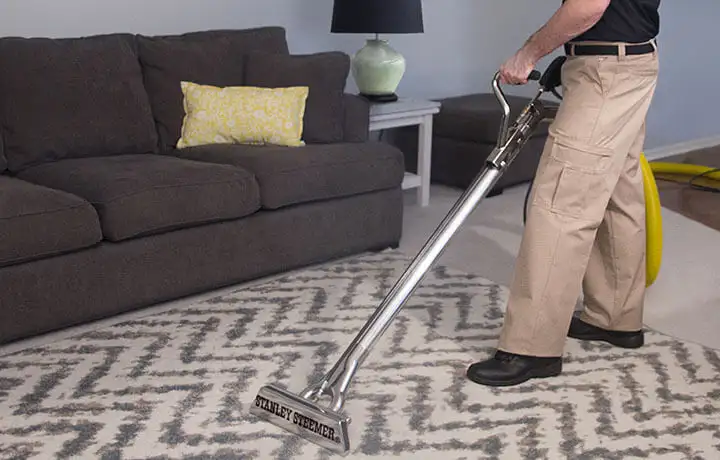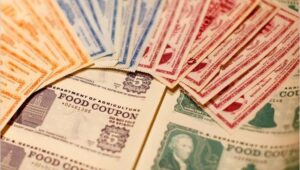Area Rug Cleaning

I. Introduction
A. The Elegance of Area Rugs
Area rugs, with their intricate designs and plush textures, have the power to transform any space into a haven of comfort and style. These elegant floor coverings not only enhance the aesthetic appeal of a room but also provide warmth underfoot.
B. The Importance of Regular “Carpet Cleaning“
Behind the allure of area rugs lies the necessity of maintenance. Just as “carpet cleaning” is vital for wall-to-wall carpets, area rugs require special attention to retain their beauty and functionality.
C. The Science of Effective Area Rug Cleaning
Cleaning an area rug is an art that combines science and expertise. Different rug materials demand specific cleaning techniques and products to ensure they remain pristine for years to come.
II. Types of Area Rugs
A. Natural Fiber Rugs
- Wool Rugs
- Luxurious and durable
- Prone to shedding
- Requires gentle cleaning methods
- Silk Rugs
- Exquisite sheen and softness
- Delicate and sensitive to moisture
- Professional cleaning recommended
- Cotton Rugs
- Affordable and easy to clean
- Susceptible to wear and fading
- Suitable for high-traffic areas
B. Synthetic Fibre Rugs
- Nylon Rugs
- Resilient and stain-resistant
- Ideal for households with pets
- Regular vacuuming and spot cleaning
- Polypropylene Rugs
- Highly durable and affordable
- Resistant to moisture and fading
- Suitable for outdoor use
- Polyester Rugs
- Soft and vibrant colors
- Prone to crushing and matting
- Requires gentle cleaning to maintain texture
C. Specialty Rugs
- Antique Rugs
- Valuable and delicate
- Expert cleaning and restoration needed
- Preservation of historical and artistic value
- Oriental Rugs
- Handcrafted masterpieces
- Intricate patterns and colors
- Careful cleaning to preserve authenticity
- Hand-Knotted Rugs
- Labor-intensive craftsmanship
- Exceptional durability
- Professional cleaning and maintenance
III. The Art of Proper Maintenance
A. Regular Vacuuming
- Preventing Dust and Dirt Buildup
- Regular vacuuming removes loose particles that can grind into rug fibers over time.
- Choosing the Right Vacuum
- Use a vacuum with adjustable height settings for different rug pile heights.
- Ensure the vacuum is in good condition to prevent damage.
- Beating and Shaking Techniques
- Occasional gentle beating or shaking outdoors helps dislodge deep-seated dust.
B. Spot Cleaning
- Quick Response to Spills
- Promptly attend to spills to prevent stains from setting.
- Blot the affected area gently with a clean, dry cloth or paper towel.
- DIY Cleaning Solutions
- Create a mild detergent and water solution for spot cleaning.
- Test the solution on an inconspicuous area to ensure colorfastness.
- Gentle Blotting and Patting
- Avoid vigorous rubbing, which can damage rug fibers.
- Blot and pat the stain gently until it lifts.
C. Professional Cleaning
- Periodic Deep Cleaning
- Schedule professional cleaning every 1-3 years, depending on rug usage.
- Experts use specialized equipment for a thorough clean.
- Choosing Reputable Cleaners
- Research and select experienced rug cleaning services.
- Verify their expertise in handling your specific rug type.
- Specialized Treatment for Specialty Rugs
- Antique, Oriental, and hand-knotted rugs may require specialized care.
- Preservation of colors, patterns, and structural integrity is paramount.
IV. Tips and Tricks for DIY Rug Cleaning
A. Testing for Colorfastness
- Safeguarding Rug Colors
- Test a small, inconspicuous area of the rug for colorfastness.
- Ensure the cleaning solution does not cause fading or bleeding.
- Conducting a Simple Colorfast Test
- Dampen a white cloth with the cleaning solution.
- Gently blot the test area and check for color transfer or damage.
B. Mild Detergent and Water
- Creating a Gentle Cleaning Solution
- Mix a few drops of mild detergent with lukewarm water.
- Avoid harsh chemicals or excessive detergent.
- Handwashing Techniques
- Apply the cleaning solution sparingly to the stained area.
- Use a soft brush or cloth to gently scrub in a circular motion.
C. Drying Techniques
- Air Drying vs. Sun Drying
- Choose a well-ventilated area for drying to prevent mold and mildew.
- Avoid direct sunlight, as it can cause fading.
- Proper Rug Flipping
- Flip the rug periodically during drying to ensure even drying.
- Ensure both sides are thoroughly dry before placing it back.
V. Handling Stubborn Stains and Odors
A. Wine and Food Stains
- Immediate Blotting
- Quickly blot and remove excess liquid or solids.
- Avoid pressing the stain further into the rug.
- Vinegar and Baking Soda Solution
- Create a paste using vinegar and baking soda.
- Apply and let it sit for a short time before gentle scrubbing.
B. Pet Stains and Odors
- Enzymatic Cleaners
- Use enzymatic cleaners designed to break down pet stains.
- Follow instructions for effective odor removal.
- Neutralizing Pet Odors
- After cleaning, neutralize lingering odors with baking soda or activated charcoal.
C. Mold and Mildew
- Identification and Isolation
- Identify and isolate affected areas promptly.
- Address the underlying moisture issue to prevent recurrence.
- Professional Remediation if Needed
- Severe mold and mildew issues may require professional remediation.
- Ensure complete removal and prevention of future growth.
VI. Storage and Protection
A. Seasonal Storage
- Cleaning Before Storage
- Thoroughly clean and dry the rug before storing it.
- Prevent dirt and moisture buildup during storage.
- Proper Rolling Techniques
- Roll the rug tightly, with the pile facing inward.
- Avoid folding, which can cause permanent creases.
B. Rug Pads and Underlays
- Preventing Slippage and Wear
- Rug pads prevent rugs from slipping and sliding on smooth surfaces.
- They also provide an extra layer of cushioning.
- Providing Extra Cushioning
- Underlays add extra comfort and extend rug lifespan.
- They minimize wear and protect hardwood floors.
C. Rotating and Reversing
- Even Wear Distribution
- Rotate the rug periodically to distribute wear evenly.
- This prevents certain areas from becoming excessively worn.
- Preserving Rug Integrity
- Reversing the rug occasionally helps maintain its appearance.
- It exposes the less-worn underside to traffic.
VII. The Significance of Professional Cleaning
A. In-Depth Cleaning Processes
- Steam Cleaning
- Hot water extraction method for deep cleaning.
- Effective for removing embedded dirt and allergens.
- Dry Cleaning
- Low-moisture cleaning process suitable for delicate rugs.
- Minimizes the risk of damage and color bleeding.
- Handwashing Techniques
- Expert rug cleaners use specialized handwashing techniques.
- Individual attention to each rug’s unique needs.
B. Restoration and Preservation
- Repairing Damages
- Professionals can repair frayed edges, holes, or tears.
- Restoration extends the life of valuable rugs.
- Re-fringing and Binding
- Restoring or replacing fringes and bindings for a polished look.
- Enhances rug aesthetics and longevity.
C. Specialty Rug Care
- Oriental and Antique Rug Expertise
- Experienced rug cleaners are equipped to handle specialty rugs.
- Preservation of intricate designs and historical value.
VIII. Conclusion
A. The Timeless Beauty of Area Rugs
Area rugs have graced homes with their timeless beauty for centuries, adding warmth and elegance to interiors. Proper maintenance ensures they remain stunning for generations.
B. Investing in Rug Longevity
Taking care of your area rugs not only preserves their aesthetics but also safeguards your investment. Regular cleaning and maintenance extend their lifespan.
C. A Refreshed and Revitalised Living Space
Clean, well-maintained area rugs not only elevate the appearance of your living space but also contribute to a healthier and more comfortable environment. Embrace the art of area rug cleaning to enjoy the lasting beauty of these exquisite floor coverings.



